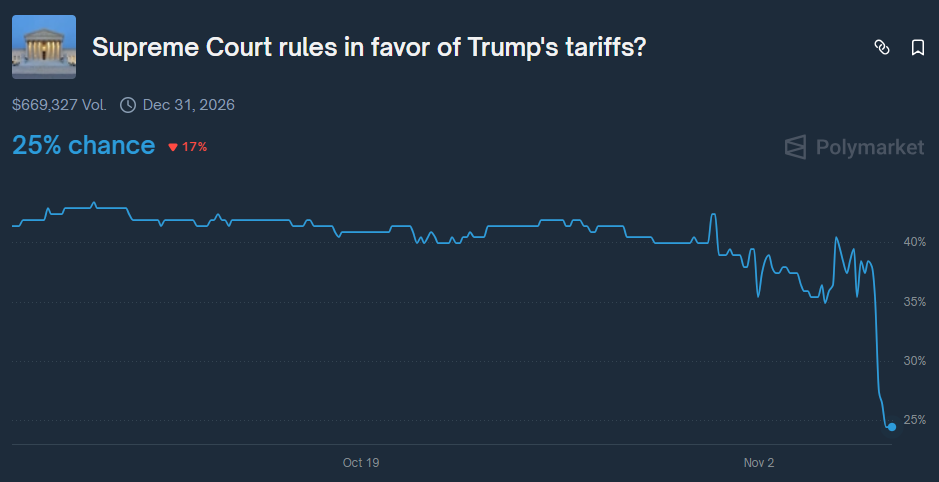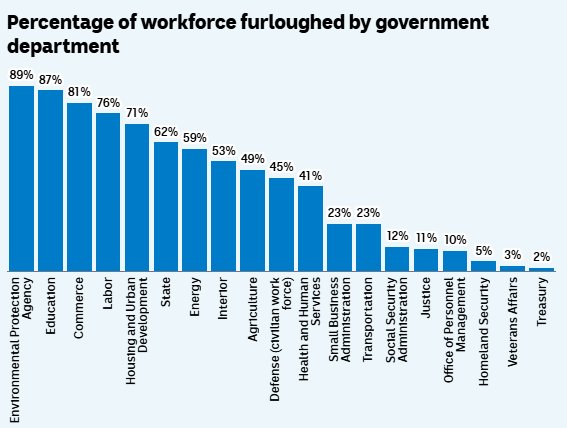ข่าวสารตลาด & มุมมองเชิงลึก
ก้าวนำตลาดด้วยมุมมองเชิงลึกจากผู้เชี่ยวชาญ ข่าวสาร และการวิเคราะห์ทางเทคนิค เพื่อเป็นแนวทางในการตัดสินใจซื้อขายของคุณ.

Artificial intelligence stocks have begun to waver slightly, experiencing a selloff period in the first week of this month. The Nasdaq has fallen approximately 2%, wiping out around $500 billion in market value from top technology companies.

Palantir Technologies dropped nearly 8% despite beating Wall Street estimates and issuing strong guidance, highlighting growing investor concerns about stretched valuations in the AI sector.
Nvidia shares also fell roughly 4%, while the broader selloff extended to Asian markets, which experienced some of their sharpest declines since April.
Wall Street executives, including Morgan Stanley CEO Ted Pick and Goldman Sachs CEO David Solomon, warned of potential 10-20% drawdowns in equity markets over the coming year.
And Michael Burry, famous for predicting the 2008 housing crisis, recently revealed his $1.1 billion bet against both Nvidia and Palantir, further pushing the narrative that the AI rally may be overextended.
As we near 2026, the sentiment around AI is seemingly starting to shift, with investors beginning to seek evidence of tangible returns on the massive investments flowing into AI, rather than simply betting on future potential.
However, despite the recent turbulence, many are simply characterising this pullback as "healthy" profit-taking rather than a fundamental reassessment of AI's value.
Supreme Court Raises Doubts About Trump’s Tariffs
The US Supreme Court heard arguments overnight on the legality of President Donald Trump's "liberation day" tariffs, with judges from both sides of the political spectrum expressing scepticism about the presidential authority being claimed.
Trump has relied on a 1970s-era emergency law, the International Emergency Economic Powers Act (IEEPA), to impose sweeping tariffs on goods imported into the US.
At the centre of the case are two core questions: whether the IEEPA authorises these sweeping tariffs, and if so, whether Trump’s implementation is constitutional.
Chief Justice John Roberts and Justice Amy Coney Barrett indicated they may be inclined to strike down or curb the majority of the tariffs, while Justice Brett Kavanaugh questioned why no president before Trump had used this authority.
Prediction markets saw the probability of the court upholding the tariffs drop from 40% to 25% after the hearing.

The US government has collected $151 billion from customs duties in the second half of 2025 alone, a nearly 300% increase over the same period in 2024.
Should the court rule against the tariffs, potential refunds could reach approximately $100 billion.
The court has not indicated a date on which it will issue its final ruling, though the Trump administration has requested an expedited decision.
Shutdown Becomes Longest in US History
The US government shutdown entered its 36th day today, officially becoming the longest in history. It surpasses the previous 35-day record set during Trump's first term from December 2018 to January 2019.
The Senate has failed 14 times to advance spending legislation, falling short of the 60-vote supermajority by five votes in the most recent vote.
So far, approximately 670,000 federal employees have been furloughed, and 730,000 are currently working without pay. Over 1.3 million active-duty military personnel and 750,000 National Guard and reserve personnel are also working unpaid.

SNAP food stamp benefits ran out of funding on November 1 — something 42 million Americans rely on weekly. However, the Trump administration has committed to partial payments to subsidise the benefits, though delivery could take several weeks.
Flight disruptions have affected 3.2 million passengers, with staffing shortages hitting more than half of the nation's 30 major airports. Nearly 80% of New York's air traffic controllers are absent.
From a market perspective, each week of shutdown reduces GDP by approximately 0.1%. The Congressional Budget Office estimates the total cost of the shutdown will be between $7 billion and $14 billion, with the higher figure assuming an eight-week duration.
Consumer spending could drop by $30 billion if the eight-week duration is reached, according to White House economists, with potential GDP impacts of up to 2 percentage points total.


The Bank of England has seemingly turned its back on protecting UK Retirement funds, after initially bailing out these funds who were facing serious liquidity issues in relation to their exposure to Fixed income assets. History As a part of new UK Prime Minister, Liz Truss’s mini budget she outlined big tax breaks for much of the country. This was to ease the pressure of increasing energy prices and cost of living.
Whilst these tax breaks would have been good for the people, increasing flow of money into the economy would not help the Bank of England in its attempt to bring down record high levels of inflation. This led to a serious pricing issue for the UK government bonds. As the yields began to rise, the prices began to drop.
This caused major issues for many of the country’s retirement funds who held almost 1 trillion pounds of exposure to these bonds and other derivatives. This created a disastrous situation whereby these funds were having to post more and more collateral and sell off their existing bonds to meet their other obligations. It also caused a viscous cycle of selling and further pushed the prices down with some funds being margin called.
With the system on the brink The Bank of England agreed to prop up the market and buy up to 5 billion pounds worth of Bonds per day. This saw an initial spike in bond prices, however it quickly subsided, and the prices have dropped back to prices that they were at before the intervention. Recent Developments According to reports, and statements from the Bank of England, the Bank is not as willing to bear the losses of these funds and prop up the market anymore.
Governor, Andrew Baily was not so enthusiastic about more buying stating that they will not bail out the Funds any longer and that they have “3 days” to sort out their books pointing to calmer conditions then the events of prior weeks. This news may come as a bit of a downer to many who were hoping that intervention would continue to support the UK guilts and the GBP. It may also indicate that the Bank is still primarily focused on getting inflation under control over a potential recession.
The chart below shows the impact of the weakening economy and the currency on the bond market as prices continue to move lower. With volatility set to continue, the question remains, Will there be enough time for the funds to rebalance their books of will the refusal to continue to prop up the bond market come back to bite the United Kingdom’s financial system.


What is a deflationary Cryptocurrency? A Deflationary Cryptocurrency is one that burns, (mints) its supply. This process lessens the number of coins or tokens on the market over a specific period (generally a year), which reduces supply and increases the price.
In general terms, ensuring that there isn’t an oversupply of a currency can be an important monetary tool to reducing inflation. Evidence of quantitative easing and what can happen when there is an oversupply can be seen by the record high inflation seen around the world. The two largest cryptocurrencies, Bitcoin and Ethereum, are both tipped to become deflationary in the future but for varying reasons Is Bitcoin deflationary?
Bitcoin has a fixed, maximum supply of 21,000,000 BTC that will be fully mined in the year 2140. The current supply of BTC is 19,008,012.00 and 20% of this supply has been lost due to forgotten passwords and forgotten keys. It’s projected that Bitcoin may officially become deflationary once its full supply has been created, as the circulating supply will continue to reduce due to holders’ unintentional losses.
Is Ethereum deflationary? Unlike, Bitcoin, Ethereum does not have a maximum supply. Rather, it has an annual supply cap at 18 million ETH.
For Ethereum to become deflationary, 2 ETH would need to be burned per block; this is because this amount is minted for each block that is mined. As per the historical data, the ETH net issuance will dive lower creating a rally in the ETH price as the circulating supply will be less. A common way to achieve deflation is by burning tokens.
Ethereum does this by minting tokens that are staked or when NFTs are minted. A point worth noting is that cryptocurrencies with a finite supply are deflationary by default. When investors buy and hold the coin, the supply reduces.
Ethereum has temporarily turned deflationary in the last few days. An unknown project by the name of XEN has assisted in the burning of ETH. What is XEN?
XEN is a project created by the “Fair Crypto Foundation,” backed by Jack Levin, one of the first employees at Google working on cloud infrastructure. The ethos aims to empower the individual with a token that starts with a zero supply and has no pre-mint, CEX listings, admin keys, or immutable contracts. XEN, which launched on Oct. 8, can be claimed, minted, or staked and is based on the first principles of cryptocurrency: self-custody, transparency, trust through consensus, and permissionless value exchange without counterparty risk.
XEN can only be traded on Uniswap, where there is very little liquidity. Time will tell if the latest hot cake in crypto turns into just another swindle. Key Takeaways ETH has turned deflationary over the past 24 hours.
High gas consumption to mint tokens for the new project XEN Crypto is the primary cause of the ETH supply drop. ETH's supply has dropped on several occasions since Ethereum completed "the Merge" in September. Are you keen to venture into trading Cryptocurrency pairs, FX, stocks or commodities?
If so, you can do so by opening an MetaTrader trading CFD account with GO Markets here or call our Melbourne based office on 03 8566 7680 to discuss your trading goals with our account managers to get started. Sources: https://au.finance.yahoo.com/, https://xcoins.com/, https://coingape.com/, https://cryptopotato.com/, https://cryptoslate.com/


The Aussie dollar has been dropping on the back of global volatility and a lower-than-expected interest rate hike. The AUD has dropped to its two-year lows, and it doesn’t look there is an end in sight. With the AUD already being a risk on currency the fears and pressures from a potential recession are weighing heavily and accelerating the drop.
Chart Analysis The weekly chart shows just how weak the AUD is particularly concerning and shows that the 50-week moving average has crossed below the 200-week average. This is also known as a death cross and is symbolic of sellers taking control of price. Furthermore, the price is dropping to levels not seen since the height of the Covid 19 pandemic and the GFC before that.
The most reasonable short-term target is the Covid lows at 0.55 AUD. It would be difficult to see the price dropping further below that. If the price was to drop further then 0.55 AUD, it would likely need to be on the back of some powerful catalyst.
In the short term it doesn’t seem like a powerful catalyst is imminent. Although, with recessionary fears on the horizon a particularly damaging recession may be able to push the AUD lower. The daily chart further enhances just how aggressive the selloff has been.
With the 50-day average dropping faster than the 200 days average the price action is worrying. The chart also shows the price in somewhat of a freefall with no immediate support. Looking forward, with economic data still to come and more rate rises expected by the Reserve bank of Australia, maybe the country’s Central Bank can inject some strength back into the currency.
However, at this stage it is fighting a losing battle.


Long and Short trading and investing strategies are often seen as advanced strategies only used for large hedge funds and large banks. However, retail traders can learn valuable lessons and ideas from this type of trading strategy that is usually reserved for institutional players. What is a long-short strategy?
A long-short strategy as described by its name involves holding a basket of both long and short positions of assets all a part of a portfolio or a singular trading strategy. These assets tend to be equities securities or derivatives but can also be other asset classes such as commodities and FOREX. The idea behind the strategy is that due to the negative correlation between the shorts and long positions they cancel out much of the market volatility whilst at the same time profiting up movements in price in either direction.
Steps to develop a Long Short strategy Establish which assets classes you wish to trade This step involves generating ideas for which asset classes you whish to trade. This may include FOREX, Commodities, Indices, or equities. For many traders, a combination of assets may produce an effective strategy.
For example, someone may choose to allocate 60% of the portfolio to equities, 20% to FOREX and 20% to commodities or 100% to equities. Determine how many assets to hold with in strategy. The aim of this section is to ensure that there are enough assets to be, diversified enough that a significant move in one direction will not blow the strategy out and to ensure.
The strategy requires that enough assets are held to minimise the volatility. If too few assets are used, then the returns may not be consistent enough and prone to large gains and losses. A standard range may include 20 assets with the breakdown of long and short varying from strategy to strategy.
Apportion the % of assets that will be held long and those that will be held short? This step involves an element of discretion and is where the individual trader can utilise their own experiences and edge to enhance the strategy. For instance, some traders may choose to create a 50/50 split strategy.
This means that exactly half the assets will be long, and half will be short. More specifically this split may occur via value weighting, number of assets or by price per share. Alternatively other strategies may involve having a lower proportion of short assets held, such as 20% Short and 80% long.
These types of strategies may work better when in a trending market because the strategy can still make money on assets that are falling in value whilst also taking advantage of the strong overall market trend. Choosing the individual assets to be held This is perhaps the most important step of the process. Choosing assets to hold can be a difficult task and may require both technical and fundamental analysis to find top performing assets to hold long and poor performing stocks to hold short.
The craft of the long, short strategy is performed at this stage as a trader needs to find high performing or low performing assets. An example of a 50/50 Long Short Portfolio construction is shown below. (NOTE this is a fictional Long Short portfolio and is not a real strategy or portfolio) Positives of a Long Short Strategy A long-short strategy may be able to avoid volatile returns and the effect of a choppy market because the short positions can reduce negative returns if the market is falling, and long positions can take advantage of the market is lifting. if a trader can effectively allocate their Longs and shorts, profit can be effectively achieved in most market conditions. Allows a trader to utilise their ‘edge’ for a wider array of assets.
Disadvantages This approach requires active portfolio management. As positions are constantly changing and weightings for different assets change, adjustments may need to be made to ensure that the strategy continues to balance. A Long Short strategy also generally requires a longer time frame then other scalping strategies or intraday strategies.
Having short positions means that the holder of the short is at risk of short squeezes. A short squeeze is something that anyone wishing to short should be aware of. It occurs when to many short positions attempt to close their positions at once.
This can cause a spike in the price and may force bigger positions to close, further driving up the price. Ultimately, a Long Short strategy for trading and investing can be a way to achieve more stability in volatile market conditions and provide a way to capitalise on market movements in both directions. Even just understanding how a Long-Short strategy works can provide traders and investors with enhanced understanding of how market forces impact on trading and potentially provide new strategies.


Gold has finally seen some respite in its price after it fell to 12-month lows. With slowing growth forecasts being a key reason as to the drop in price. Recessionary fears can sometimes be good for the price as volatility draws money to gold as it is seen as a haven.
However, with the USD being so strong and investors pulling their money away from Gold, the commodity has struggled to protect its value. The price has shown some interesting action in recent days. The weekly price was able to break through its long terms support at about $1690.
However, as this level was so significant, the price is now retesting zone. In addition, the price has bounced off the 200-week moving average. The 200-week moving average is often seen as an extremely strong support level and rarely gets broken without significant resistance and then combined with the support zone has proven difficult to break down through.
However, the price is no sure thing to continue to bounce. As seen on the chart, the price is also in a consistent downward channel and has so far failed to break through the top of the channel. The daily chart confirms the bounce and shows why the price may have found resistance.
This is because it is currently resting below the 50-day moving average which is acting as long-term resistance and has acted as resistance since May 2022. The question remains, will the price remain at its current level, push up or push down. As more economic data comes out and Central banks either double down on inflation or pivot towards easing interest rates which will hopefully provide some more clarity on which way the price may go.
At this stage it would be best to wait for a confirmation either to the downside or upside of the channel.


The EURAUD buoyed by a weaker Australian Dollar lighter lighter monetary policy from the Reserve Bank of Australia, (RBA) has seen the currency pair move with some momentum in recent days and weeks. The RBA came out in its most recent meeting and raised rates by an unexpectedly low 25 bps vs 50 bps. This helped equities and housing stability but pushed the AUD to very lows levels.
The Euro on the other hand has suffered with geopolitical conflicts and recessionary pressures that have hit major players in the Union. With Germany in particular suffering quite large inflationary issues putting severe pressure on the EUR. After to dipping to as low as 1.42 AUD in both April and August this year, the pair has been able to move back into the major range that the price has been holding since 2013, excluding the commencement of the pandemic.
Technical Analysis The weekly chart as discussed above highlight that this pair does not usually trend and if it does trend it tends not hold the trend for very long. Rather the price tends to hold a range with breaks of range usually the outcome of extreme economic events such as the GFC or the pandemic before retreating into the range. The weekly chart also indicates that the price may be ready to reverse back up as seen by the double bottom pattern that has formed.
The neckline needs to be broken by the price at 1.54 for the pattern to be confirmed. The question is whilst this price is showing signs of a reversal, the price is sitting just on a significant resistance area. The daily chart shows an interesting case for either a breakout or a breakdown.
Firstly, the price has so far not broken out completely and is still consolidating at the neckline. In addition, the price is overbought to a high level and on previous occasions when it was this overbought, it has fallen back down. However, it is possible that the RSI is also just consolidating and getting ready to breakout.
This chart needs a little bit more time to be sure of a direction, however a potential long target if it breaks out to the long side could be 1.60 and to the short side if it fails could be 1.42. With economic still to flow for both Australia and Europe the EURAUD is definitely one to keep an eye on.

